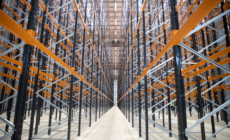-
ROSSLARE EUROPORT TARGETS HEALTH & SAFETY WITH CAMERA TELEMATICS PARTNERSHIP - 2 days ago
-
Landmark Study Reveals Wearable Robotics Significantly Boost Safety and Efficiency in Industrial Environments - July 24, 2024
-
Visku Tackle The Retail Seasonality Challenge One Pallet At A Time - July 22, 2024
-
KAMMAC AND BERGEN LOGISTICS STRENGTHEN FASHION & LIFESTYLE SERVICES IN THE UK - July 19, 2024
-
TENTBOX EXTENDS PARTNERSHIP WITH ARROWXL TO SUPPORT INCREASING DEMAND - July 17, 2024
-
The Perfume Shop improves customer journeys while driving profitability in partnership with Scurri - July 17, 2024
-
ZEROMISSION SECURES £2.3M ($3M) INVESTMENT TO ACCELERATE ELECTRIC FLEETS - July 16, 2024
-
BCMPA CELEBRATES SUCCESS OF 2024 CONFERENCE - July 15, 2024
-
Best of the Best: Jungheinrich Celebrates Triple International Award Win - July 12, 2024
-
GOPLASTICPALLETS.COM CALLS ON NEW CHANCELLOR RACHEL REEVES TO CONSIDER PLASTIC PACKAGING TAX REFORM - July 10, 2024
Why Health And Safety Means More Than Hard Hats.
Health and safety at work has long been a hot topic, and one that organisations simply cannot ignore. However, when most of us think about health and safety at work we imagine hard hats, hi-vis jackets and steel toed boots, but in reality the issue is much more complex than that.
While the total cost of work-place injuries (slips, trips and falls) has dropped by 35% since 2004/5, the cost of work-related ill health has not changed since 2011. Some 1.3 million people are suffering from work related ill-health with 40% suffering from stress, depression or anxiety, 39% from back, shoulder or neck pain and the remaining 21% from other illnesses. According to the Health & Safety Executive this currently costs the UK economy £15bn a year.
Victoria Anderson, operations director at Better Humans Technology, explains: “Health and safety in the work place is certainly not just about wearing a hard hat in a potentially dangerous situation, it is about continually protecting employees both in mind and body. Stress is a common complaint; but what is it and is it misunderstood?
“Stress is basically data being transmitted from sensors in our body to and from our brain and nervous system to keep us running healthily and safely. Apart from the senses we all know about (hearing, touch, taste, smell and sight) there are a host of other senses which sense the state of our internal organs, how you understand yours and other mental state and how we connect to the rest of the world. Each of these senses transmits masses of data every second to our body and minds. Humans can handle a huge amount of stress but problems arise when we get data overload and we stop functioning properly. It’s like having too many apps open on your mobile phone at once…the battery drains very quickly. Have you ever tried to concentrate on a task when you are tired, worried or hungry….it’s more difficult.
“Much of H&S is focused on the working environment; but what if the stress is coming from an emotional or mental trigger? This is incredibly common and can lead to muscle tension, poor posture, fatigue, strains and sprains. How many times have you tripped or broken something because your mind was elsewhere? Your mental state can have a huge impact on your propensity to have mishaps and accidents. Therefore we need to understand the whole person not just the environment; where are the stress triggers coming from…is it grief, loss, anxiety, heartache and this has a knock effect on your physical health leading to bad posture, back and neck pain.
Anderson adds: “Fortunately there are techniques and technologies now available such as the REACH programme which can promote well-being by making sure your brain and body are working in harmony and not against each other.”

































